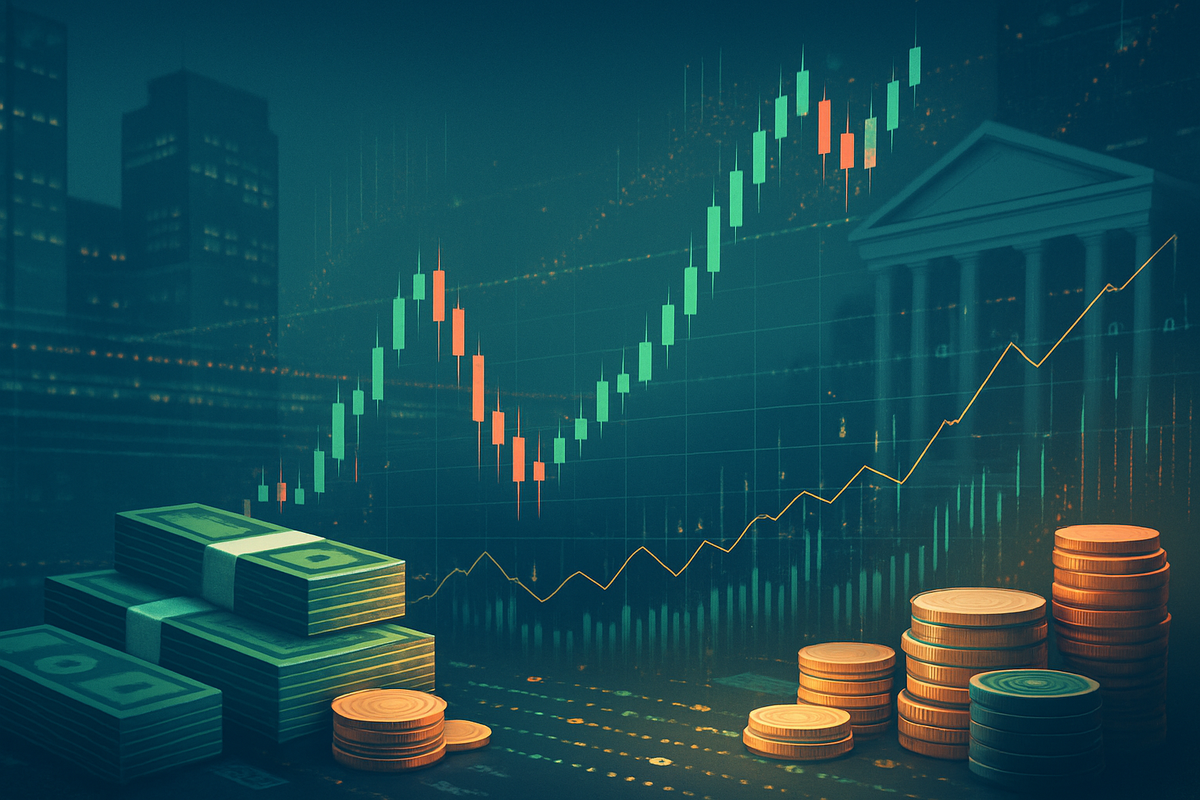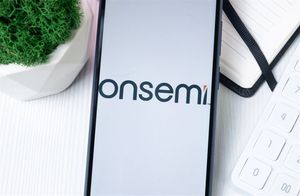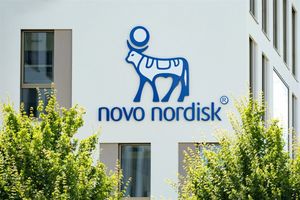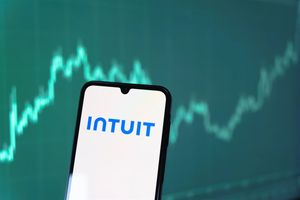
U.S. stock buybacks, a corporate finance tool enabling companies to repurchase their own shares, are currently experiencing an unprecedented surge. As of October 2025, these repurchases have become the dominant method for companies to return capital to shareholders, significantly outpacing dividends. While theoretically designed to boost earnings per share, enhance shareholder value, and signal management confidence, the practical outcomes of this trend are sparking intense debate and regulatory scrutiny. The immediate implications include continued upward pressure on stock prices, an artificial inflation of EPS metrics, and a spotlight on corporate capital allocation strategies, all against a backdrop of increasing calls for stricter oversight.
The landscape of U.S. corporate finance is currently defined by an unprecedented surge in stock buybacks. As of October 2025, these repurchases are shattering previous records, with S&P 500 companies spending a staggering $293.5 billion in Q1 2025 alone—a 20.6% increase from the prior quarter. Annual buybacks for 2024 hit an all-time high of $942.5 billion, and projections suggest this figure could soar to $1.2 trillion in 2025, with total announced buybacks potentially reaching $1.3 trillion. This exponential growth saw U.S. companies surpass $1 trillion in buybacks at the fastest pace ever recorded by August 20, 2025.
The genesis of this buyback boom dates back to 1982 when the U.S. Securities and Exchange Commission (SEC) enacted Rule 10b-18. This crucial regulation provided a "safe harbor," protecting companies from accusations of market manipulation when repurchasing their own shares under specified conditions. Before this rule, buybacks were rare and often viewed with suspicion. Post-1982, the practice steadily gained traction, evolving from a mere $6.6 billion in 1980 to approximately $200 billion by 2000. Over the past four decades, corporations have announced over $9.9 trillion in share buybacks, with more than half of that occurring since 2008, underscoring a significant acceleration in recent years. This shift has firmly established buybacks as the dominant method for returning capital to shareholders, having surpassed dividends roughly two decades ago.
Key players driving this trend are predominantly large corporations, particularly within the technology and financial sectors. Companies like Apple (NASDAQ: AAPL), for instance, which spent $106.9 billion in the last 12 months and announced a $100 billion program in May 2025, consistently lead the pack. Other tech giants such as Alphabet (NASDAQ: GOOGL), Nvidia (NASDAQ: NVDA), and Meta Platforms (NASDAQ: META) are also significant repurchasers, alongside financial powerhouses like JPMorgan Chase (NYSE: JPM) and Exxon Mobil (NYSE: XOM). The top 20 S&P 500 companies alone accounted for nearly half of all buybacks in Q1 2025. On the regulatory front, the SEC's efforts to enhance disclosure rules for buybacks were notably vacated by the U.S. Court of Appeals for the Fifth Circuit in December 2023, citing inadequate economic analysis. This means companies continue to operate under older disclosure requirements. However, the Inflation Reduction Act of 2022 introduced a 1% excise tax on corporate share repurchases, effective January 1, 2023, marking a tangible legislative response to the buyback surge.
Initial market reactions to buyback announcements have historically been positive, often resulting in an immediate bump in share prices, as investors interpret these actions as a signal of management's confidence and belief that the stock is undervalued. However, this positive sentiment has always been tempered by skepticism. Concerns about short-termism, potential misallocation of capital, and the use of buybacks to artificially inflate EPS (which often ties into executive compensation) have been persistent criticisms since the practice became widespread. The vacating of the SEC's enhanced disclosure rules has further fueled debates about transparency and accountability in corporate capital allocation.
Company Impact: Winners and Losers in the Buyback Era
The current surge in U.S. stock buybacks creates a distinct landscape of winners and potential losers among public companies, profoundly affecting their financial performance, stock valuation, and strategic decisions. As buybacks are projected to exceed $1 trillion in 2025, driven by mega-cap technology and financial firms, the strategic deployment of this capital allocation tool becomes paramount.
The Winners: Companies with robust cash flows and strong balance sheets that strategically utilize buybacks without compromising long-term growth are emerging as clear winners. Tech giants consistently lead this charge. Apple Inc. (NASDAQ: AAPL), for instance, continues its unparalleled buyback spree, announcing a record $110 billion program in 2024 and another $100 billion in May 2025. This aggressive, consistent activity significantly bolsters its Earnings Per Share (EPS) and supports its market capitalization. Similarly, Alphabet Inc. (NASDAQ: GOOGL), with an additional $70 billion authorization in April 2024, and Meta Platforms (NASDAQ: META), which expanded its repurchase authorization by $50 billion in Q4 2024 and spent $17.6 billion in Q1 2025, are leveraging strong free cash flows to enhance shareholder value and signal confidence. NVIDIA Corporation (NASDAQ: NVDA) also joined the fray with a substantial $60 billion buyback announcement in mid-2025, capitalizing on surging data center revenues. In the financial sector, JPMorgan Chase & Co. (NYSE: JPM) authorized a $50 billion program in July 2025, while Exxon Mobil Corporation (NYSE: XOM) targets $20 billion in annual buybacks through 2026, both aiming to reward shareholders and optimize capital structures amidst strong earnings. These companies benefit from increased EPS, supported stock prices, and positive investor sentiment, which reinforces their market leadership.
The Potential Losers: Conversely, companies that engage in ill-timed, debt-funded, or strategically misaligned buybacks risk undermining their financial health and long-term viability. Those that finance repurchases through excessive borrowing, especially when their stock is overvalued, can destroy shareholder value by buying shares at inflated prices and burdening themselves with increased debt and interest obligations. This can lead to a higher debt-to-equity ratio and reduced financial flexibility. Furthermore, companies that prioritize buybacks over essential long-term investments—such as research and development, capital expenditures, or employee training—may suffer a decline in innovation, competitive advantage, and future earnings potential, despite any short-term EPS boosts. The perceived short-termism can stifle sustainable growth. Additionally, companies that issue new shares (e.g., for executive compensation or acquisitions) while simultaneously conducting buybacks can dilute the positive effects on per-share metrics, negating the intended value creation. Lastly, smaller companies or those in less profitable sectors that cannot compete with the sheer scale of buyback programs from mega-cap firms might see their stocks underperform, exacerbating the performance gap and struggling to attract investor attention in a buyback-heavy market.
Wider Significance: A Broader Economic and Regulatory Lens
The record-breaking volume of U.S. stock buybacks in 2025 carries profound implications, reflecting and shaping broader industry trends, impacting competitive landscapes, and driving significant regulatory discussions. This sustained commitment by corporations to return capital to shareholders, particularly by mega-cap technology and financial firms, underscores a complex interplay of economic health, corporate strategy, and evolving policy.
The current buyback surge, with S&P 500 companies spending nearly $1 trillion in the 12 months ending March 2025 and projections for $1.2 trillion in 2025, is a testament to strong corporate balance sheets and a strategic preference for buybacks as a tax-efficient method of shareholder return. This trend reinforces the notion that buybacks are now the dominant form of corporate payout, having surpassed dividends since 1997. It signals robust corporate confidence in future growth and financial stability, even as some critics argue that such cash could be better utilized for long-term investments in innovation or workforce development. The concentration of buybacks among a few large players, especially in the IT and Financials sectors, further solidifies their market dominance and capital allocation strategies.
The ripple effects of this extensive buyback activity are multifaceted. Competitors, particularly within the technology and financial sectors, face increasing pressure to adopt similar capital return strategies to maintain attractive shareholder returns and prevent their stocks from underperforming. This can lead to a "follow the leader" dynamic in capital allocation. Interestingly, many leading tech companies are simultaneously engaging in massive buybacks while also significantly increasing investments in cutting-edge areas like AI infrastructure. For instance, Microsoft (NASDAQ: MSFT), Amazon (NASDAQ: AMZN), Alphabet (NASDAQ: GOOGL), and Meta (NASDAQ: META) collectively plan to spend over $300 billion on AI infrastructure in 2025, indicating a dual strategy of shareholder returns and strategic growth. However, this focus on buybacks also reignites concerns about potential diversions of resources from employee wages, research and development, or other long-term initiatives that could foster broader economic benefits. Furthermore, the sheer scale and predictability of these buyback programs could potentially invite "front-running" by sophisticated trading firms, raising questions about market integrity and demanding robust compliance from financial institutions.
On the regulatory front, the Inflation Reduction Act of 2022 introduced a 1% excise tax on stock buybacks, effective since December 31, 2022. While this tax, with its clarified regulations from April 2024, has not significantly deterred the overall volume of buybacks, it represents a tangible government effort to address criticisms of the practice. Looking ahead, President Biden's Fiscal Year 2025 Budget Proposal suggests increasing this excise tax to 4%. This potential increase is also being considered by some Republican lawmakers as a revenue-generating mechanism to offset the costs of extending expiring provisions of the Tax Cuts and Jobs Act (TCJA). A 4% tax could more noticeably impact corporate behavior by further narrowing the tax advantage buybacks hold over dividends, potentially prompting companies to re-evaluate their capital allocation mix. However, some analysts caution that such an increase could exacerbate existing market distortions, such as penalizing equity-financed investments by C corporations.
Historically, the current buyback surge draws comparisons to past periods of elevated repurchase activity that sometimes preceded significant market downturns, such as the late 1990s dot-com bust and the 2008 financial crisis. This has led some observers to question if the current record pace is a "red flag" for an impending market top. However, crucial differences distinguish the current environment. U.S. corporations currently hold over $4 trillion in cash and short-term investments, providing an unprecedented "war chest" that could enable them to sustain buybacks even during market volatility, unlike in previous downturns. Moreover, while the dollar value is at an all-time high, the year-over-year growth rate, though strong, lacks the "explosive exponential surge" seen before prior market tops, suggesting a more strategic and resilient approach rather than irrational exuberance. The ability of buybacks to show strength in 2022 despite falling share prices further supports the notion of a more ingrained and strategic corporate practice this time around.
What Comes Next: Navigating the Future of Share Repurchases
The trajectory of U.S. stock buybacks in the coming months and years will be shaped by a dynamic interplay of corporate profitability, evolving economic conditions, and potential shifts in the regulatory landscape. As of October 2025, the immediate future points to a continuation of record or near-record buyback activity, with significant long-term implications.
In the short-term (next 6-12 months), buybacks are expected to remain robust, potentially surpassing $1.1 trillion by the end of 2025. This will continue to provide substantial support to stock prices, contributing to annual boosts of 3-5%. The technology and communication services sectors, spearheaded by giants like Apple (NASDAQ: AAPL), NVIDIA (NASDAQ: NVDA), Meta (NASDAQ: META), Alphabet (NASDAQ: GOOGL), and Microsoft (NASDAQ: MSFT), are anticipated to maintain their leadership in this activity. While the 1% excise tax remains a factor, its impact on overall volumes is currently considered manageable. However, the expiration of the Tax Cuts and Jobs Act (TCJA) at the end of 2025 and potential shifts in interest rates could introduce new variables. A gradual easing of monetary policy by central banks, including the U.S. Federal Reserve, could lower borrowing costs, potentially encouraging even more buybacks or increased dividend payouts.
Looking further ahead (next 2-5 years), the long-term possibilities for buybacks hinge on corporate profitability and the delicate balance between shareholder returns and strategic reinvestment. If strong earnings persist, buybacks are likely to remain at elevated levels, continuing their dominance over dividends as the primary capital return mechanism. However, a crucial adaptation for companies will be demonstrating a balanced approach to capital allocation. While buybacks offer short-term benefits, companies will face increasing scrutiny to ensure these repurchases do not come at the expense of vital long-term investments in innovation, research and development (R&D), and new technologies like AI and GenAI. Indeed, many CFOs are already planning increased capital allocation to new technologies in 2025, suggesting a dual strategy.
The regulatory environment remains a significant wildcard. The ongoing discussions around increasing the buyback excise tax to 2-2.5% or even 4% could prompt a strategic pivot from companies, potentially reallocating capital towards dividends or growth projects if the tax burden becomes too high. Continued political and public scrutiny over buybacks' impact on long-term investment, worker wages, and income inequality may also lead to more stringent regulations or calls for enhanced disclosure, despite the recent vacatur of the SEC's proposed modernizing disclosure rule. Companies might also adopt more valuation-sensitive buyback strategies, mimicking approaches like Warren Buffett's, by repurchasing shares primarily when they are genuinely undervalued, rather than through systematic, price-agnostic programs.
Market opportunities may emerge for investors focusing on "buyback aristocrats"—companies with consistent, disciplined buyback programs that effectively reduce share counts. Conversely, challenges include potential market distortions from the sheer volume of buybacks, which some critics warn could inflate valuations beyond fundamentals or amplify market cyclicality. The predictability of large corporate buybacks also poses a risk of "front-running" by sophisticated trading firms, potentially disadvantaging individual investors.
Several scenarios could unfold:
- Continued Buyback Boom (Most Likely): Strong corporate profits and manageable regulatory hurdles lead to sustained high levels of buybacks, supporting EPS and stock prices, but also fueling ongoing debates about their broader economic impact.
- Regulatory-Induced Shift: A significant increase in the excise tax or other government interventions forces companies to reallocate capital, potentially boosting dividends or, ideally, increasing investments in R&D and human capital.
- Economic Slowdown/Recession-Driven Decline: A severe economic downturn or credit crisis compels companies to significantly cut buybacks to preserve cash, removing a key support for stock prices and potentially increasing market volatility.
- Strategic Rebalancing Towards Investment: Companies proactively pivot from excessive buybacks towards increased investment in innovation and human capital, driven by competitive pressures, investor demands for sustainable growth, or ESG considerations. This would be positive for long-term economic health but might temper short-term EPS growth.
As of October 2025, the most likely scenario points to a continuation of the robust buyback trend, primarily led by financially strong technology companies. However, the interplay of economic conditions, potential regulatory adjustments, and evolving corporate strategies will determine the precise path and broader implications of U.S. stock buybacks in the coming years.
Wrap-up: Assessing the Market and Investor Outlook
U.S. stock buybacks are a powerful and enduring feature of the financial landscape in late 2025, fundamentally reshaping corporate capital allocation over the past two decades. The current record-setting activity underscores their significance in influencing market dynamics, investor returns, and corporate strategies, though it remains a subject of intense debate regarding its broader economic impact and increasing regulatory scrutiny.
Key Takeaways:
- Record Activity: U.S. companies, particularly S&P 500 constituents, are engaging in unprecedented levels of buybacks, with 2024 setting records and 2025 poised to surpass $1 trillion.
- Dominance over Dividends: Buybacks have firmly established themselves as the primary method for returning capital to shareholders, largely due to their tax efficiency and corporate flexibility.
- Concentrated Leadership: The bulk of buyback activity is concentrated among a few mega-cap technology and financial firms, such as Apple (NASDAQ: AAPL), Meta Platforms (NASDAQ: META), Alphabet (NASDAQ: GOOGL), and JPMorgan Chase (NYSE: JPM).
- EPS Boost and Market Support: Buybacks can boost Earnings Per Share (EPS) and provide consistent demand for equities, supporting stock prices.
- Regulatory Scrutiny: The 1% excise tax on buybacks is in effect, and proposals to increase it, potentially to 4%, are under consideration, reflecting ongoing political and public concerns.
- The Theory vs. Practice Debate: While theoretically beneficial for shareholder value, critics argue that in practice, buybacks can lead to short-termism, inflate executive compensation, and divert funds from long-term productive investments.
Assessment of the Market Moving Forward: The market for U.S. stock buybacks is expected to remain robust through late 2025 and into 2026, driven by strong corporate cash flows and a continued strategic preference for shareholder returns. While high market valuations might suggest diminishing returns from buybacks in terms of EPS accretion, the sheer volume indicates that companies either see value in their stock or simply have ample excess cash. The balance between buybacks and significant capital expenditures, especially in AI, will be a critical theme for tech companies. The ongoing debate around the excise tax, particularly with the renewal of the TCJA, could introduce new variables, potentially leading to adjustments in corporate capital allocation strategies.
Final Thoughts on Significance and Lasting Impact: Stock buybacks have irrevocably altered corporate finance. Their lasting impact includes a heightened focus on "total shareholder yield" (dividends + buybacks) as a key investor metric. While they offer clear benefits in capital management and signaling confidence, the enduring criticisms regarding their potential to foster short-termism, contribute to wealth inequality, and potentially stifle long-term innovation mean that their overall contribution to sustainable economic growth will remain a subject of intense scrutiny and debate for years to come.
What Investors Should Watch For in Coming Months:
- Regulatory Developments: Closely monitor legislative proposals concerning the buyback excise tax, as any increase could influence corporate capital allocation.
- Corporate Earnings and Cash Flow: Strong financial performance will continue to underpin buyback activity.
- AI Investment vs. Buybacks: Observe how major tech companies balance their aggressive AI investment plans with ongoing buyback programs.
- Valuation Context: Consider the context of buybacks within market valuations. While some companies may repurchase shares because they see them as undervalued, high market valuations could lead to less impactful EPS accretion from buybacks.
- "Buyback Aristocrats": Goldman Sachs identifies "Buyback Aristocrats" as S&P 500 companies that have reduced their share counts by 1% or more in at least nine of the past ten years, noting their historical outperformance. Tracking these companies and their continued commitment to buybacks could offer investment insights.
This content is intended for informational purposes only and is not financial advice





